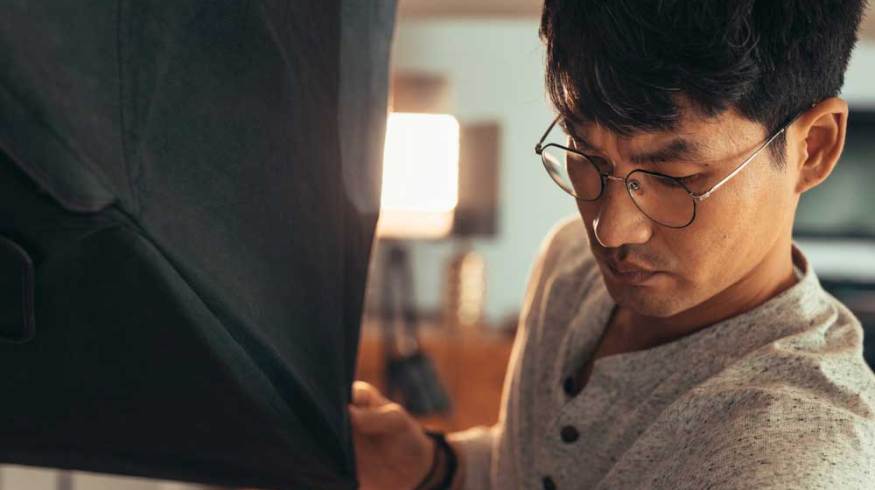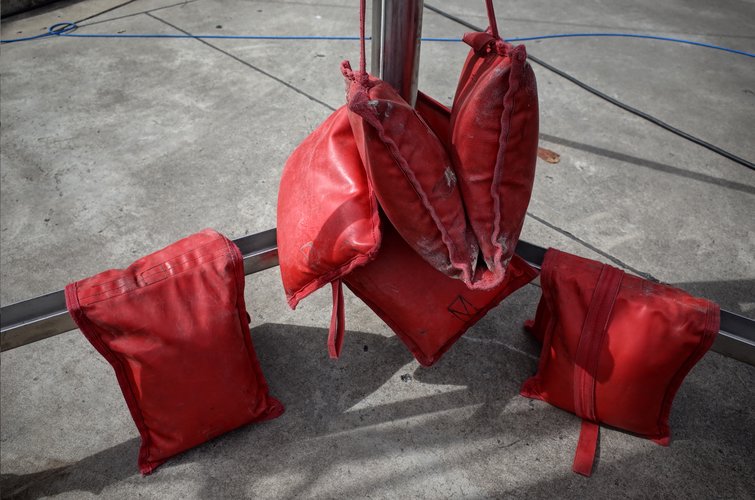
Getting Your Lights and Camera in Impossible Places
The Mini MAX is a great option to lighting a scene, giving the actors and camera the freedom to move and shoot at almost 360 degrees.
Lighting a scene can seem straightforward, until you realize that there’s no way to hide the C-stands or light stands where the camera won’t see them. What seemed like a simple setup can become three or four different setups while you shoot around the physical limitations of the space.
This always takes longer to shoot, and can easily create continuity issues in the edit.
Big-budget productions get around the limitations of the humble C-stand by using cranes, overhead grids, and other big pieces of equipment that come in a large truck and take a team of experienced grips to set up, operate, and take down.
Luckily for the independent filmmaker, there are some cheaper alternatives on the market that let you get your lights and (if you’re brave enough) camera sixteen feet in the air and nine feet from the stand.
Mini MAX
At forty-four pounds, the Matthews Mini MAX grip is a hefty chunk of metal. But, it also fits in the trunk of a car and one person can carry it.
The stand is a one-piece arrangement with an arm supported by two uprights. These uprights meet at the base, supported by two feet extending diagonally to the ground, creating a tripod. The arm can extend outward in three sections, and you can lower or raise it by changing the lengths of the uprights.
Stabilization

Image via Thongden Studio.
Weigh the Mini MAX down to stabilize it. I placed 3×10 pound sandbags on it — one on the base and one on each leg. You can then mount your payload to the end of the arm and extend it section by section.
Give the stand the “shake test” at each stage of setting up to make sure it’s stable enough to proceed. The engineering of the Mini MAX is solid, but you want to practice a healthy “margin of error” whenever you’re suspending a large piece of metal and glass above your talent.
I was able to get my ten-pound Intellytech Mega ten feet in the air without any worries; running the cable down the arm to the power supply, I attached it to the base and used it as extra ballast. You could shoot a dinner table scene in a wide shot, or anything else requiring a pool of directed light, and easily keep the stand behind or beside the camera.
You can substitute a light for a camera on a lighter tripod head, but I found it difficult to predict the orientation as the Mini MAX arm moves in an arc as you elevate it. I was only able to get the shot I wanted by raising the camera to the desired position, then using a ladder to set the shot.
Cost
The Mini MAX costs $1,140. I rented one for a day in L.A. for just $35. If you need to lift more weight, or need to get it further from the base, Matthews also makes the popular MAX Menace arm. This arm can lift 175 pounds, and it goes twenty feet in the air. It costs $6,763, but you can rent it for around $75 in most major cities on peer to peer sites like ShareGrid and KitSplit.
Check it out yourself!
Cover image via Jacob Lund.
Want more tips of building your lighting kit? Check these out.





